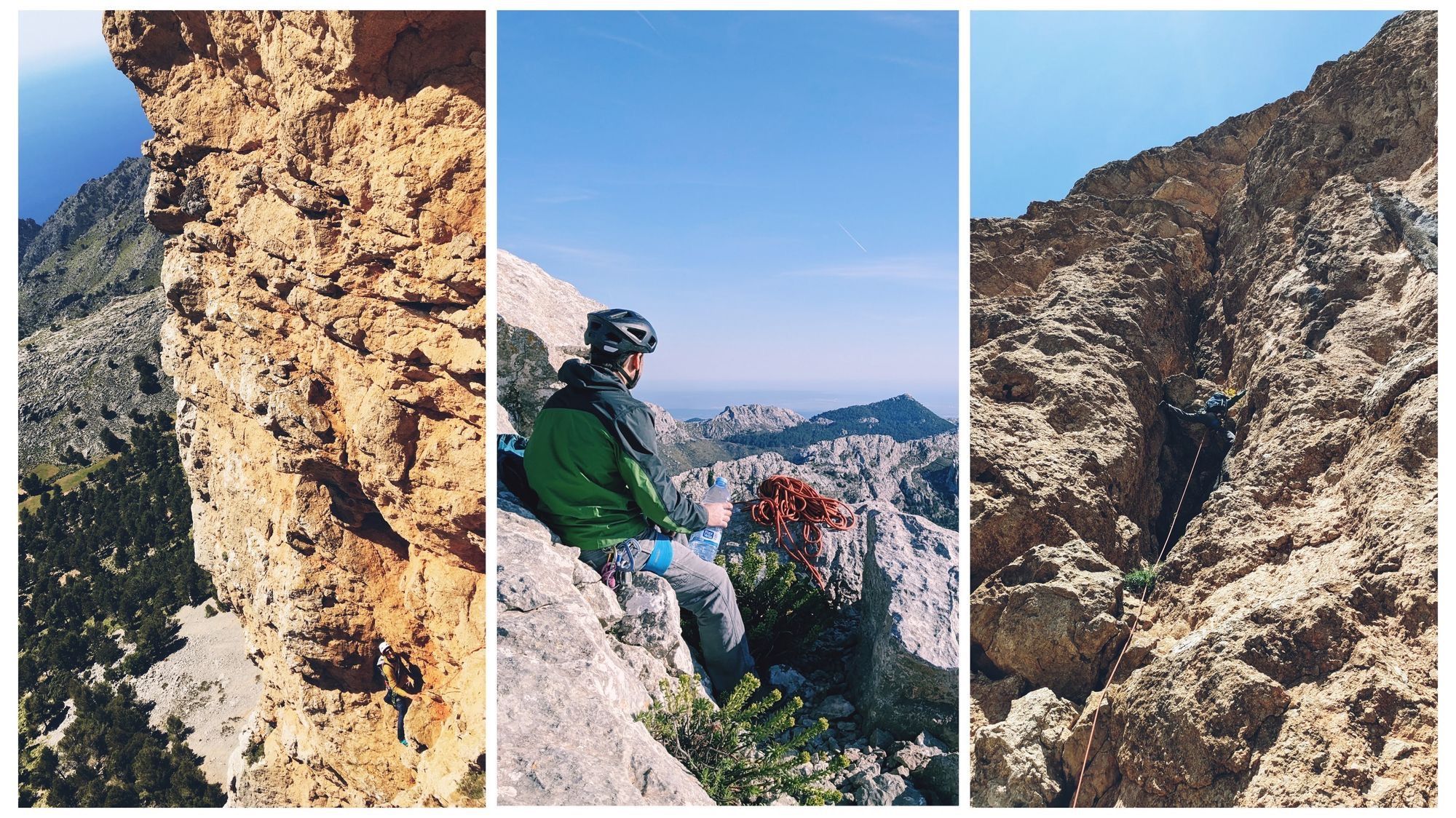Mallorca.
No doubt one of the top spring, autumn and even winter getaways for outdoor enthusiasts and climbers in particular. With dozens of well bolted sport climbing areas and all levels of difficulty, steady good weather and the beach close by many come here for an easy, low stakes climbing trip. However, what if I told you climbing on Mallorca can be more adventurous? Dare I say more interesting?
Beyond the bolted world of single pitches Mallorca does have its fair share of multi pitch, trad and even alpine climbing that exists mostly unseen by the average climbing focused visitor. There is much more to be discovered and explored than what is listed in the (very good!) sport climbing guides that have been available for many years. And yes: A lot more beyond the well known multi pitch lines in Sa Gubia!
This guide is focused on these kinds of climbs and is meant for the climber who looks to get „out there“ a bit more!
Contents
Note that I will add additional content over time. So check back from time to time!
- General information
Rock types and quality
Climbing, protection and gear
Weather
Permits and enviromental conversation
Logistics - Multipitch climbing
Via Normal / Agulla de Frare, Puig Major (170m / 5b or 4c/A0)
Via La Comon / El Paredon, Puig Major (280m / 6a+)
Via Socuellamos / El Paredon, Puig Major (250m / 6a)
Via Directa des Pilar / El Paredon, Puig Major (285m / 6b+ or 6a)
Sa Bretxa / Sa Calobra (55m / 4c)
Albahida / Sa Gubia (230m / 4c)
Agulla Forcada „El Bispe“ / Galatzo (105m / 5c)
Espolon Aries / Penyal des Migdia (260m / 5b)
Na Penyal Arista Brucs / Son Servera (40m / 5b)
Puig ses Bruixes south-east ridge / Randa (150m / 5c)
Pepe y Ramon / Puig de Alaro (160m / 5c)
Agulla de Boquer / Port de Pollenca (70m / 5c)
Cavall Bernat East Arete / Port de Pollenca (185m / 4a)
Penyal Bernat / Port de Soller (35m / 4b) - Scrambles / advanced hikes
Serra de Torrella traverse / Puig Major tunnel
Cavall Bernat traverse / Port de Pollenca
Puig Major ridge climb / Coll de Reis
Galatzo East Face / Puigpunyent - Caves
Cova Mitjana / Canyamel
Cova Tancada / Port de Alcudia
Cova des Genet / Porto Cristo - Torrents / Canyons
Torrent de s'Arboceret / Arta
Torrent de Pareis / Tramuntana
How this guide works
First of all this guide will not try to be an exhaustive listing off all multi pitch and alpine climbs on Mallorca. Instead we will focus on a selected number of climbs (all of which we have climbed ourselves) and describe these in depth to spare you the sometimes Indiana Jones level archaeological work that is necessary to gather all the information.
Besides the true multi pitch routes we also added a few ridge scrambles, canyons and caves to the mix - just so that you have something to do on one of the very rare bad weather days or as „active recovery“.
All of the tours (be it climbs or otherwise) we selected for this book are described in the following manner:
- General information on the route, its surroundings, interesting historical or cultural tidbits and which view is definitely not to miss.
- Logistics on how to get there, where to park and where you can grab a coffee after your successful day.
- Approach and how to get back to the car.
- Technical information on the route and what gear to bring.
- Information on the climbing, pitches and route finding.
Every climbing tour includes a topo and a table describing all pitches that can be printed out or kept on a mobile phone for quick reference. For most other activities we have added photos including the route (scrambles) or special topos (caves) as well.
Besides the text we have added plenty of pictures and drawings to make this book a one stop shop for those looking to attempt these tours.
This guide uses the french climbing grade system.
Be aware that, if you see topos or listings of climbs other than in this book, in Spain the grades are often stated in Roman numerals until V+ (5c in French grading) and then continue in the normal French Arabic numbers (6a, 6b, 6c…).
Acknowledgements
A very special thanks to Brigitte Feil for the topo designs and execution.
I am grateful for anyone who provided additional photographic material for this guide.
A sincere apology and thanks to all of the test readers, copyeditors and brave souls who made it through my rough drafts.
To all my touring partners who had the joy or burden to join me on the adventures described in this guide. Thanks and to more to come!

